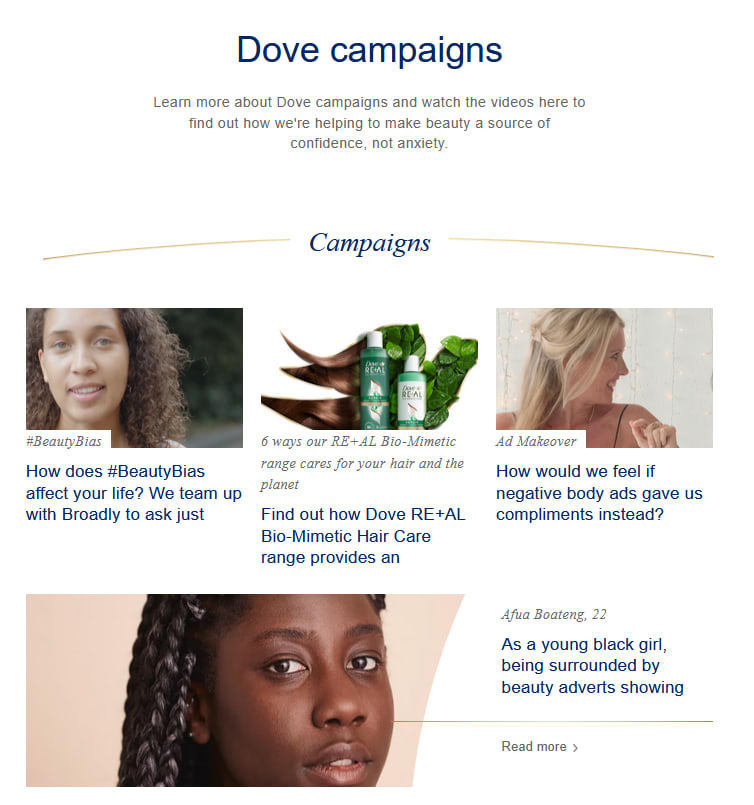What Is a Case Study? Types and How To
Discover how to create compelling case studies that convert prospects into clients.
 May 5, 2025
May 5, 2025 9 minute reading
9 minute reading
Let’s say you’re running a SaaS company and you’re marketing your business to expand your clientele. However, even though you catch attention with your ads, you’re not getting more clients. What could be the problem?
Ads don’t showcase your company’s capabilities, so they might not always bring new clients. To get prospects, you also need to build their trust. Nearly 60% are more likely to buy from a trusted brand, regardless of price, according to Edelman. One way to establish trust is to show that your business has a proven track record of success through case studies. In this guide, we’ll cover what a case study is, its types, and how to write a case study for your business.
What is a case study?
A case study is a research methodology involving an in-depth analysis of a subject, like an event, organization, individual, or group. This methodology is often used in life, social sciences, healthcare, and marketing.
In business, case studies help business owners and leaders identify issues that may be hindering company success. From there, research is conducted to explore the matter further, using methods like data collection, analysis, and client or customer interviews.
Case studies are also often used in a business’s marketing strategy. In this context, case studies are detailed reports that explain a client’s needs, how the company addressed those needs, and the effectiveness of the solution provided.
Case studies are more narrative-driven than white papers, which present a problem by diving into more technical data like research, figures, and facts. A typical case study is shorter, usually between 500 and 1,500 words, while a white paper can extend to approximately 5,000 words.
Writing a case study is like telling a compelling story of how your customer achieved success using your product or service. This is further supported by testimonials and specific metrics that demonstrate measurable results. If you’re looking for professional assistance in crafting a compelling case study for your business, experienced freelancers on Fiverr can help bring your story to life.
Benefits of using case studies
Here’s how case studies can add value to your business:
Building trust with prospects: Case studies demonstrate a business’s proven track record of success. Highlighting what their business can do and what they offer to clients helps build trust with prospects. PwC’s 2024 Trust Survey found that 93% of business executives agree that building and maintaining trust directly improves their bottom line.
Showing real-world applications of your products or services: Case studies provide concrete examples of how your offerings address real-life client challenges. By showcasing how your business successfully solved a problem, you illustrate your product or service's practical value and effectiveness. They serve as a research method to gain deeper insights into customer needs.
Improving conversion rates: According to the Content Marketing Institute, 75% of B2B marketers use case studies, and 53% consider case studies among the most effective types of marketing content. By using case studies as part of your strategy, you can attract more clients and position your company as a trusted solution provider.
Types of case studies
There are multiple types of case studies, each serving a distinct purpose. Choosing the right type for your business depends on the industry you’re in and how you want to position your brand. Here are five common types of case studies:
Problem-solution
A problem-solution case study outlines a client’s problem and demonstrates how the business assisted them using its products or services. This case study approach effectively highlights a company’s capabilities, boosting its brand image and credibility. Problem-solution case studies can be useful for B2B-focused businesses, like marketing agencies or B2B tech companies.
For instance, the case study on how WeightWatchers partnered with HubSpot to modernize its sales process highlights the company’s pain points and issues. It details how HubSpot provided sales and marketing solutions to resolve WeightWatchers’ challenges.

HubSpot
The case study explains how WeightWatchers wants to address the lack of automation in its sales team and the need for more comprehensive business insights. It describes how HubSpot’s Marketing Hub and Sales Hub platforms provided practical solutions, effectively demonstrating the capabilities of HubSpot’s services.
Find a case study writer for hire
Success story
A success story is a case study presented in a narrative format. It highlights customers’ experiences with a company’s product or service, emphasizing how it solved their problem.
A success story goes beyond metrics and shifts the focus to the human experience, illustrating how a company’s products made a difference in customers’ lives. For professional help in creating your own success story, Fiverr provides access to skilled writers who excel at crafting multiple case studies that resonate with audiences.
A notable example of a success story is Dove’s “Real Beauty” campaign case study, one of the brand’s most well-known campaigns. Launched back in 2004, the “Real Beauty” campaign made a great social impact as it challenged beauty norms and unattainable beauty standards by featuring real women with diverse appearances and body types.

Dove
The success of the “Real Beauty” campaign has had long-term effects on Dove’s brand, positioning it as a socially conscious brand and distinguishing itself from other beauty brands by championing diversity and inclusivity in beauty. Throughout the years, Dove continued to launch more initiatives under the Real Beauty campaign to empower women and make them feel seen and represented.
Implementation
An implementation case study explains the process of adopting a new system, technology, or strategy. It helps businesses understand and evaluate how a solution is implemented. This case study method also determines whether a program or solution has been properly or successfully implemented. Implementation case studies are best for SaaS companies, software companies, and B2B tech solutions.
Examples of case studies with an implementation focus are NetSuite’s case studies. Cloud-based software company NetSuite presented three case studies detailing its successful enterprise resource planning (ERP) implementations for three clients. The three case studies demonstrate NetSuite’s expertise in handling ERP implementations while helping readers understand how the system works and is integrated.
Exploratory
An exploratory case study acts as a starting point for further studies. This type of case study is usually conducted before a larger-scale research design. It’s useful for identifying research questions and trends in an industry.
For instance, Working Not Working wrote a case study about its (Un)Happiness Survey, which was developed to get real-time insights into how full-time creatives feel about their jobs. The case study highlights that many employees are unhappy with their current work situation and raises the question of whether or not employee satisfaction matters.
Working Not Working’s (Un)Happiness Survey case study brings attention to a problem and uses survey data to understand the current employment landscape better. It explores the topic of employee satisfaction and gives insights into different approaches employers can implement to keep their employees engaged.
Customer spotlight
Customer spotlight case studies highlight how a business’s customers use its products and services. This is best for promoting your business and showing the tangible benefits of your offerings.
As Eucalypt Media’s Content Marketing Director Kathryn Hawkins said, customer spotlights allow businesses to “shine a light on the great work you’ve done in the past,” which can help convince potential buyers of a brand’s unique value.
An example of a customer spotlight is Canva’s case study on how Upworthy used its customizable templates to engage more readers.

Canva
The case study highlights Upworthy, provides background information on the company, and covers how it used Canva Pro to create more visual content. The study also includes a testimonial from an Upworthy writer, positioning Canva as a trustworthy brand that has effectively supported their content creation needs.
Find a case study writer for hire
How to create a case study
While case studies come in multiple types, they generally follow a standardized format. Getting creative with your case studies can enhance engagement, but it’s important not to overlook the essential elements.
Here are the basic steps you can follow to create an effective case study.
1. Choose the right customer story
Choosing a client who has achieved outstanding results from your products or services helps highlight the benefits of your solutions. Make sure to look for clear results. Did the customer achieve increased sales, improved efficiency, or other tangible outcomes? Having concrete data or measurable improvements will strengthen your case study research.
2. Get formal permission
Before writing your case study, you should secure formal permission first from the client you’ve chosen. Not all customers are willing to be featured, and some have strict review and approval procedures for any official promotional or marketing content mentioning their brand. Getting formal permission can help prevent miscommunications or legal issues.
3. Collect the data
Now that you’ve chosen a client and acquired formal permission to feature them in your case study analysis, it’s time to start compiling data. The purpose of a case study is to promote your business by presenting proof of success through measurable results.
The data you collect should be tailored to your client’s specific goals and success metrics. This could involve demonstrating ROI or highlighting key performance indicators that the client was aiming to improve.
Aside from quantitative methods and metrics, you can also conduct customer interviews and use questionnaires to gain valuable qualitative insights. Make sure to interview key stakeholders involved in the decision to adopt the product or service featured in the case study. Qualitative research allows you to illustrate the broader impact of your offerings beyond just numbers.
Additionally, don’t forget to ask for relevant supporting materials, such as screenshots or product images. Including these visuals can help make your case study more engaging.
4. Structure your case study
Case studies can come in different formats. Your chosen format will depend on your goals and the message you want to convey. However, regardless of the format, it’s best to incorporate these key elements and best practices:
Create a compelling title: Your customer success story should have an eye-catching title highlighting your case study's key results.
Include an executive summary or overview: Provide a concise summary covering the client’s problem, the solution you offered, and the results your product or service achieved.
Describe the customer’s challenge or problem: Explain what your client was trying to achieve or resolve by working with your company.
Explain your solution and implementation process: Providing details of your solution and implementation process can help your audience understand how your product or service works. This helps them visualize how it can also benefit them if they are dealing with a problem similar to your client’s.
Detail the results: Present the results of the case study clearly and include specific metrics when possible.
Add customer quotes and testimonials: If possible, ask your client for a quote or testimonial about their experience with your product or service. This can serve as a powerful endorsement and help boost your brand credibility.
Include a call to action: After reading your case study, readers who found it valuable will likely want to learn more about your brand. Ending your case study with a call to action can encourage them to take actionable steps. For example, you can encourage them to sign up for a free trial or schedule a consultation.
5. Draft the content
Once you have all the necessary data, the next step is to start writing. When drafting your case study, keep it clear and concise so your readers can quickly grasp the key points. Understanding the case will help you highlight the most relevant details.
Use visuals like graphs, charts, or images to present figures and data more clearly. If you need expert assistance developing a strong case study, Fiverr offers a pool of experienced writers who specialize in crafting impactful narratives.
6. Review and get approval
Before publishing your case study, you need to review and revise the draft thoroughly. Ensure that the data is accurate, including verifying different data sources. Check for spelling, grammar, punctuation, and formatting errors, and review the draft for clarity and consistency. You can also seek feedback from your team to improve the draft further.
Finally, send the case study draft to your client for approval. This step is crucial to ensure your client is accurately represented in your case study and that it aligns with their expectations.
7. Publish and distribute
With your case study reviewed and approved, it’s time to publish it. You can post it on your website and share it on social media. Doing so can improve your SEO while boosting your company’s credibility and building trust with prospects.
Beyond these channels, consider other distribution strategies to maximize their impact. You can repurpose individual cases into different formats, such as email campaigns or video content, to promote your customers’ success stories.
Find a Content Writer for Hire
Can AI tell your customer success stories for you?
Advancements in artificial intelligence (AI) have made it an effective tool in digital marketing, from streamlining data gathering to generating AI content. While AI can speed up the process of creating a case study, at the end of the day, it’s just another tool for humans to use. It still requires human oversight, especially when tackling complex issues.
The purpose of writing case studies is to attract prospects by showcasing how real people achieved success by working with your company. Since it relies on authentic human experiences, a case study would be better written by skilled writers who excel at storytelling—something AI can’t fully replicate.
If you decide to use AI in writing your case study, you can hire professional editors. AI content editing on Fiverr can help you review, proofread, and humanize the content to improve the quality of your case study.
Using case studies in your marketing
When your case studies highlight genuine customer success stories, they become powerful storytelling tools that can enhance your marketing strategies.
You can build credibility, foster trust with prospects, and improve your conversion rate by effectively leveraging case studies. There are various ways to incorporate case studies in your marketing efforts, including:
Organizing your case studies in a dedicated section on your website
Publishing them on your blog
Using them in sales
Featuring them in email sequences
Promoting your case studies across social media platforms
Including them in paid ads
Issuing press releases featuring your case studies
Hire marketing professionals on Fiverr today
Understanding the key elements, processes, and best practices of writing a case study can help you start drafting one. However, if you want to leave the storytelling to a professional writer, you can hire a Fiverr Pro writer to make the case study for you. These skilled freelancers can help you write content for your brand, from case studies, content writing, and copywriting to industry and educational articles.
At Fiverr, we have a wide pool of verified and experienced writers who can help you create compelling case studies that effectively highlight your customers’ success stories and boost your brand credibility. You can request customized project proposals tailored to your specific requirements. For enterprise-level case study needs, Fiverr Business offers tailored solutions. You’ll also have access to collaborative tools for more efficient communication.
[Browse Fiverr’s top-related case study writers and content strategists]
Case studies FAQs
What is a simple definition of a case study?
A case study demonstrates how a product or service was used to solve a specific problem. Businesses use case studies to highlight customer success stories, showcasing how their offerings have helped customers achieve measurable results and overcome challenges.
Which is an example of a case study?
A specific case study example is Dropbox’s “Get More Space” referral program. Dropbox struggled with customer acquisition costs, and its solution was to implement a referral program that offered free storage for referrals. According to ReferralRock, Dropbox saw a 3,900% growth in just 15 months, thanks to the significant increase in referrals.
How do you explain case studies?
Businesses use case studies as storytelling tools to demonstrate the effectiveness of their products or services through customer success stories. A case study explains:
The problem that the client wanted to resolve
How the company’s product or service helped solve the problem
The measurable improvements achieved through the solution
What is the main purpose of a case study?
The main purpose of a case study is to showcase how a product or service can solve a real-world problem. Businesses use them to:
Build credibility and trust
Increase conversion rates
Educate and inform audiences






